Revealing another side to the Eternal City, Elisa Colarossi takes us on a guided tour around the treasures of Rome’s suburbs…
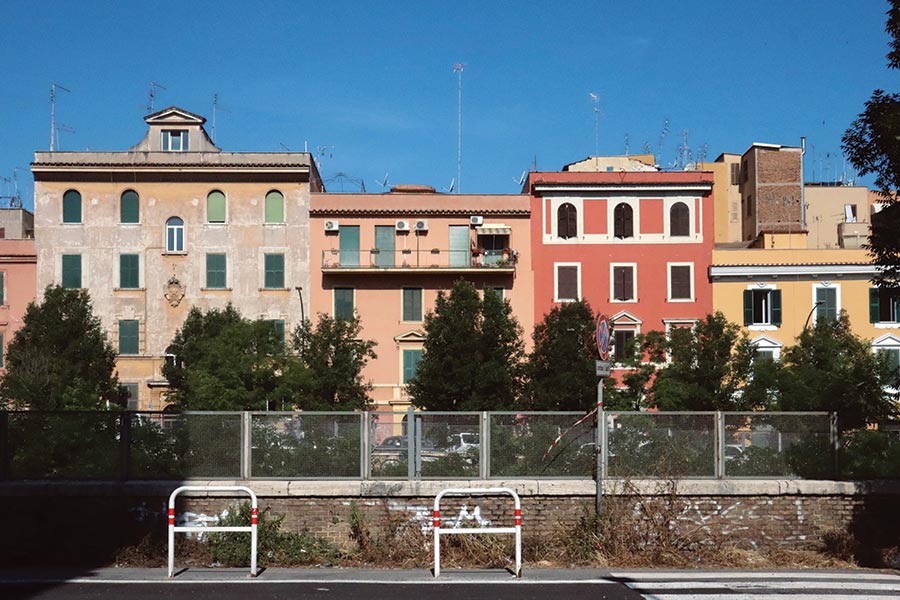
As any born-and-bred Roman, I acknowledged early in my life that with its enticing history, movie-like atmosphere and picture-perfect features, Rome is undoubtedly the city of dreams. But behind that magical façade, another kind of beauty is hiding.
Curious travellers will be excited to discover this brilliant and little-known area called periferia (suburb), where I was proudly born. It brings a brand-new fresh perspective on the familiar face of Rome that everyone should experience, at least once!
Historically, local neighbourhoods have successfully revived themselves with their bustling food, drink, and local lifestyle scene, and yes, the suburb is the place to be! And even more so in Rome.
With the sound of Roman dialect everywhere and residents busy running their errands bond seamlessly with street art, surprising architecture, authentic living, and mouthwatering bites for a superb and truly unusual two days in the Eternal City, far away from the crowds.
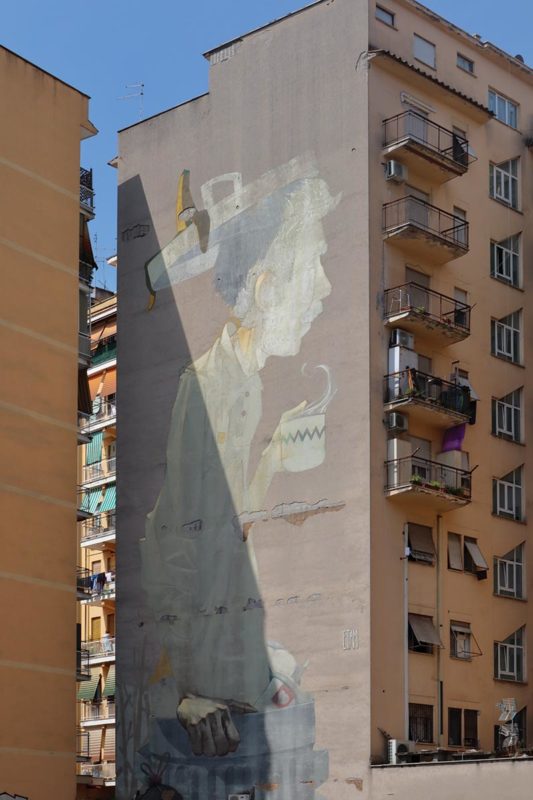
Day 1: Tor Pignattara and Pigneto
That typical suburban ‘rough around the edge-ness’ is what I love about the periferia romana. What makes it so special for me is not only that I call it home, but because exploring it should be high up in any must-see Roman trip.
That uniqueness that suburbs hold easily captivates any visitor who explores for the first time – and Tor Pignattara, the first neighbourhood stop in our bedazzling 48 hours, doesn’t disappoint, thanks to its strong street art, eye-catching architecture and fascinating history – a buzzing and lively international hub where cultures, food, and traditions combine to give life to, as we Romans call it, ‘Tor Pigna’.
One of the striking points of interest in these colourful streets is the ‘Coffè Break’ mural by Etam Cru – at 32 metres high it is the tallest street artwork in Rome.
Marvel at more than thirty works of street art, proving that Tor Pignattara is an alluring, intricate open-air museum to get lost in.
Walking the streets of Tor Pignattara is like diving into a bubbling pot, your eyes are constantly distracted and this vibrant atmosphere is exactly what the suburbs are all about.
After basking in the wondrous artworks and authentic local lifestyle, venture onto the Via Casilina. As you walk you’ll get to witness the Roman traffic glide by on one of the busiest streets of the capital.
A fascinating deep-dive into history awaits, starting from the ‘Cannon’, a monument that commemorates every victim of war, but specifically the victims from Tor Pignattara during the first world war, followed by the Parrocchia Dei Santi Marcellino e Pietro ad Duas Lauros, its Catacombs and the wondrous Mausoleo di S. Elena.
It doesn’t matter if you’re out of the centre or on the very edge of the GRA (Grande Raccordo Anulare, the ring road of the city), in Rome you’ll always find some bits of history, guaranteed.
Monuments, street art and lots of steps work up an appetite – and where better to satisfy it than Osteria Bonelli, a local favourite offering true Roman food in a no-frills setting ? Order the special of the day or stick with a tasty Roman primo.
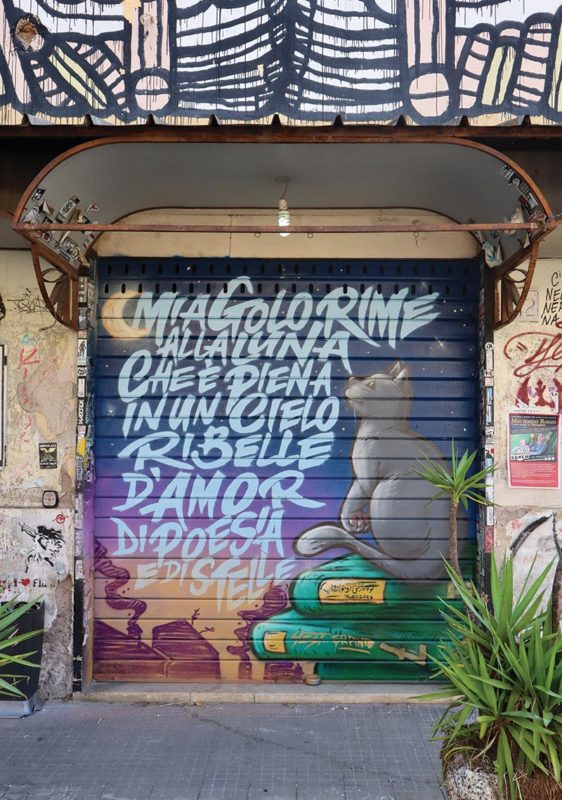
Bohemian vibes
After a fulfilling Roman feast, gently slide into a nearby local favourite neighbourhood, where street art, nightlife and bohemian vibes collide – there’s just one place that can fit it all: Pigneto.
Colourful, lively, fresh and typically Roman, this neighbourhood offers some of the best in terms of aperitivo and that beloved Roman-style passeggiata.
Walk along the Isola Pedonale to take in the energy of the area, then cross the bridge that divides the district, glimpsing the train tracks below, to stroll through the little streets of Pigneto, rich in murals and poster art.
Pigneto accompanied me during my high school years and I have tremendous memories, which is why this area holds a significant place in my heart.
Grab a coffee at Necci, one of the cornerstones of the neighbourhood. If you still have some appetite, try one of my favourite pizza rossa slices of eastern Rome at Forno Ferrari.
This area is also rich in little villini (tiny villas), meaning that Pigneto is not just a nightlife destination, but an attractive residential area, where walks can be quite relaxing. Make sure to have your phone or camera ready to capture the most colourful and edgy aesthetic as Pigneto offers seriously dazzling scenes.
As the sun sets, the cool side of Pigneto starts to come to surface: groups of ragazzi having their aperitivo and a loud cacophony of background chatter taking over. Grab a beer at Birra+, for a great selection of local pints, or have a bottle of Peroni at Bar Rosi, to properly ‘do as the Romans do’.
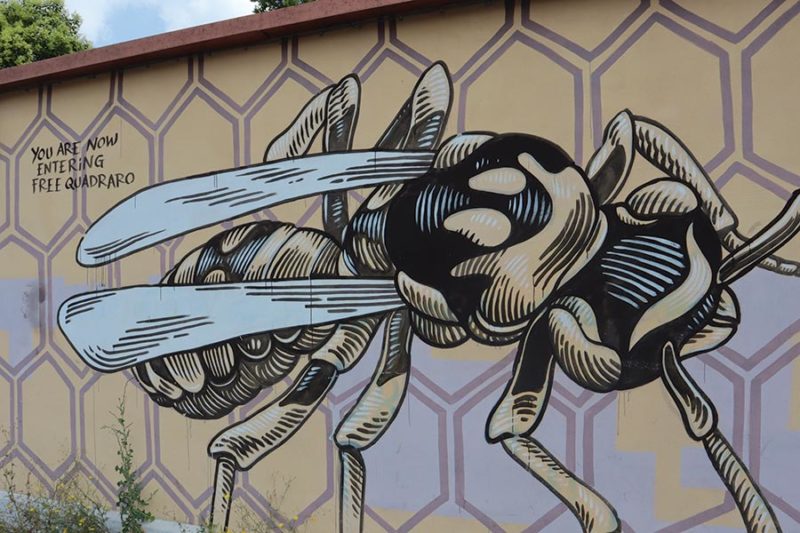
Day 2: Quadraro and Centocelle
Our second suburban day starts in Quadraro, one of my favourite neighbourhoods in Rome for street art and a true Roman vibe: calm, gentle but with a strong character and a ‘messy’ personality.
I truly consider Quadraro the Roman oasis par excellence with its little villas, tranquil condos and incredible nature tucked just minutes away (see Appia Antica, Tor Fiscale).
Dive into the history of Quadraro with a glimpse of the Nido di Vespe (Wasps’ Nest), an artwork by Lu Camaleonte on Via del Monte del Grano, which translates in images the name that the Occupation used to refer to the area given its very high concentration of the Resistance fighters during the second world war.
It’s a story that ended in tragedy 70 years ago and is now remembered thanks to the abiding power of art.
The streets of Quadraro have a certain appeal; and they masterfully transform a simple walk into an unforgettable experience.
The passion of this area always leads me to cool street art and sceneries, but most of all to one of the finest Roman maritozzi (sweet cream buns) at L’Angelo Azzurro, a busy pastry bar where locals gather from early in the morning until right before dinner.
Wander through the wonderful streets of the oldest part of Quadraro, called Quadraro Vecchio, rich in beautifully colourful townhouses and brilliant murals. And to satisfy your needs for Roman cuisine, try the best local food with an authentic feast at Osteria der Tempo Perso.
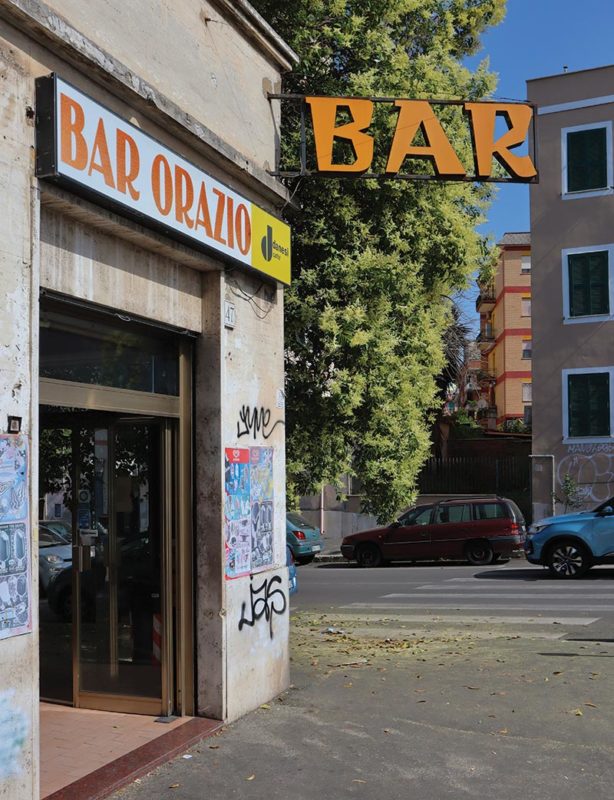
After lunch
Jump on the Metro A at Porta Furba station, change directions at San Giovanni, grabbing the Metro C, and get out at Mirti station, where Centocelle, the place I was born, is begging to be discovered.
Centocelle is a bustling neighbourhood that has been evolving year after year – the place to be for amazing food experiences and relaxed drinking sessions.
Not only is the gastronomic scene truly glorious, but with its easy lifestyle and pastel-coloured buildings, this area of eastern Rome can give off amazing ‘little town vibes’. Don’t expect awe-inspiring centro storico sceneries; instead you’ll find a fabulously casual and welcoming atmosphere.
Have a coffee break at Bar Orazio, the oldest bar in the neighbourhood, a favourite location for Italian movies and TV series – stepping inside is like going back to the 1950s.
Have a walk in the main Via dei Castani, then head to the Chiesa di San Felice da Cantalice, the main church of Centocelle, built between 1934 and 1935 – it’s the place where all the kids living in the area get baptised and receive their First Communion (as did yours truly).
Just a little to the left of the church, the majestic Acquedotto Alessandrino, built in 226 AD by Emperor Alexander Severus, will gradually reveal its majestic self as one of the most precious landmarks of Centocelle.
These streets, filled with authentic local life, are also some of the best for the most famous Italian ritual in Rome: the aperitivo.
A favourite place of mine to drink before dinner is Festina Lente – easy-going, lively and probably the place that epitomises the chill and enthusiastic attitude of the neighbourhood.
The Roman suburb is all about that: true hidden gems, conviviality and a no-frills lifestyle. Nonne strolling their carts from a fruit vendor to another, Roman dialect, old men hanging out at the bars for coffee and chats about calcio, kids playing football on the sidewalk and countless unknown details encapsulate the essence of the Roman suburbs.
A whole new kind of Roman history can be experienced, as well simply witnessing how these neighbourhoods flow, thanks to, as I always say, a kind of simplicity that makes things extraordinary. That’s why stepping off the beaten path and out of our comfort zone can lead to a wonderful feeling of ‘that was so worth it’. Rome knows how to wow in effortless style.
Ready to plan your trip? Start with our suburban Rome travel guide
All photos © Elisa Colarossi @romangalgoesaround
